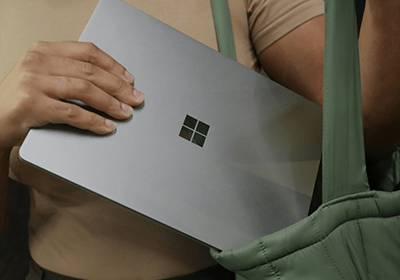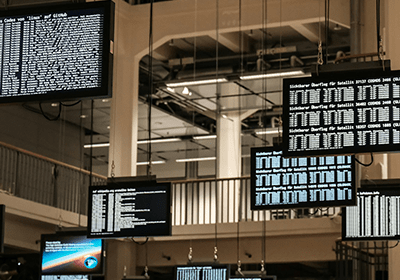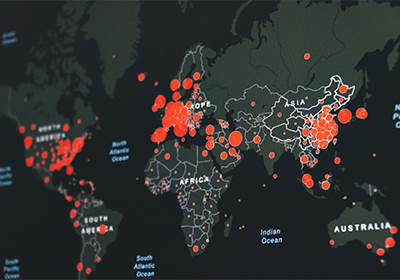Creating a Connected Factory
Leveraging technology to connect employees, processes, machines, data, and customers.
Last week we introduced the first post in a series dedicated to how technology is helping shape the future of manufacturing. Within this piece, we touched on several areas in which manufacturers are adopting in order to align to the ‘Factory of The Future’ strategy.
So lets dive into the first solution and talk about building more agile factories through connected factories.
Far from just a concept based on longstanding aspirations of Industry 4.0, the factory of the future means going beyond the walls of production to transform the entire connected manufacturing ecosystem. Where we once imagined a factory focused on the digital, robot-driven production floor, reality has transcended the factory floor to include the entire manufacturing ecosystem—connecting employees, processes, machines, data, and customers—far beyond what was once envisioned.
Manufacturers have already invested $100M in smart factory initiatives, with those who have implemented smart factories seeing 17-20% productivity gains. Yes, the “factory of the future” involves machines, products, and factories. But contrary to past fears of automation and robots replacing people, the factory of the future is actually empowering people, including:
- Manufacturing business leaders using data from hyperconnected networks to develop customized, meaningful products and services
- Factory workers using continuous insights to predict and prevent machine failures and improve operational effectiveness
- Customers providing real-time usage data and experiential sentiment to inform how manufacturers innovate to support valuable experiences
So what challenges are top of mind for you in terms of connecting employees, processes, machines, data, and customers?
Modernizing your factory floor can help you create agile and responsive end-to-end operations and provide your customers with customized products and services:
- Integrate data from IoT with other product and customer data to create new insights into customers’ desired outcomes and generate data-driven and AI enhanced products and services that differentiate in the new service economy by delivering customer outcomes
- Increase revenue and margins by providing a connected sales and services platform that increases productivity and compliance, and can keep up with new product and service offerings
- Innovate using digital twins and big compute to get products that customers want to market faster, by enabling more iterations on product, manufacturing, and supply chain designs
- Engage manufacturers’ customers with differentiated buying experiences that leverage mixed reality (MR) and easy to use quote to-cash processes to increase wins and margins
By embedding AI into your products now, you can supply personalized and intelligent assistance, predictive maintenance, and remote monitoring after your products leave the factory. MR blends the physical and digital worlds, and paired with AI infused insights, you can use MR to visualize products before they’re manufactured; this allows you to change how you design, build, sell, and service your products.

So let’s describe a connected factory in more detail…
Connected intelligent machines and IT systems provide continuous insights, enabling manufacturing leaders to make better informed decisions with objective, up-to date market data; manage inventory in near-real time; and revise processes and drive new innovations to meet demand. Such hyperconnected networks of free-flowing data will enable manufacturers to work with shorter lead times, forge a tighter link between supply and demand, develop new business models as market demand and opportunities arise, and accelerate new product introductions to market.
Connected devices
Connected Factory enables you to connect individual pieces of equipment at your own pace, with no need to connect everything at once or disrupt production. Want to experiment by connecting one machine now, and the entire assembly line starting next week? You have the flexibility to do that. Want to connect everything quickly and start getting insights as soon as possible? Your old equipment won’t slow you down. Connecting your equipment empowers you to consolidate data across machines on the cloud, via edge gateway devices, enabling you to centralize while achieving powerful controls and protection. Connected Factory enables robust security by using the OPC UA standard and Microsoft Azure security end-to-end. With your machines connected to the cloud, you can empower your employees with near-real-time visibility into performance, whether they’re on the factory floor or at headquarters. Intuitive, visual dashboards ensure timely detection of anomalies, so your employees can order adjustments and repairs before operations are impacted. This drives improved utilization, reduced waste, targeted cost savings, and improved quality.
Predictive manufacturing
By developing predictive models for your business, you can adjust processes and systems to trigger preventive actions when certain conditions occur. Imagine a scenario where one of your machines is reporting an increase in vibration. With Azure Machine Learning, your system can automatically compare this event to past data points and determine the best route forward. In this circumstance, it finds that similar increases in vibration in the past have resulted in downtime; a new work order is automatically initiated to enable timely maintenance. Predictive models can also be used to identify variations in quality, as well as their causes, before quality thresholds are passed. In this scenario, sensors identify that the output of a machine is approaching the tolerance threshold. A worker receives a timely notification to replace the router bit to ensure that quality remains within an acceptable range.
Supply chain visibility
With a Connected Factory solution, you can achieve end-to-end visibility into your production and value chain. You can aggregate data from across your factories to provide you with an overall picture of your manufacturing business. You can see at a glance your global overall equipment efficiency and key performance indicators. And critical alerts, outages, and operational and efficiency anomalies are all escalated for fast resolution. Let’s imagine you have factories in Florida, Germany, and India. Your dashboard shows you that your factories in Germany and India are functioning normally, but there’s an anomaly at your factory in Florida. It’s producing fewer units than usual. Connected Factory enables you to drill into your data to compare performance of factories, and even to compare the performance of equivalent machines at multiple sites. You find that, compared to equivalent machines at your factories in Germany and India, one of your robotic arms in Florida is working less efficiently, causing a bottleneck in production.
Advanced analytics
Applying advanced analytics to manufacturing data can produce insights to optimize the productivity of individual assets as well as the total manufacturing operation. Deployed in conjunction with each other, these tools enable operators to maximize their productivity and profitability. Advanced Analytics makes it possible for manufacturing professionals to engage in more fact-based discussions, comparing the real impact of different parameters on business outcomes before making decisions and, in many cases, to consider counterintuitive actions that might improve productivity or profitability.
Safety improvement
Major advancements in technologies will improve manufacturing efficiency, safety and productivity by incorporating real-time data analytics and artificial intelligence (AI). Ultimately, customer experiences will be improved as a result of increased connectivity, along with greater visibility and traceability of key processes and outcomes. Machine Learning requires little to no human interaction in detecting errors, meaning the equipment will identify and notify the owner of any anomalies, such as overheating, loose parts, etc. This allows for preventive maintenance and repairs, which can be a huge time and money saver later on down the road. And with these increases in technology, the work environment becomes much safer as well.

To customize your products and services for your customers—and innovate at the speed that product-as-a-service requires—you need an agile, responsive production process. You need solutions that can help you enable a “connected factory of the future.” By that, I mean a complex ecosystem of self-regulating machines and sites that customize output, optimally allocate resources and offer a seamless interface between the physical and virtual world. The journey to factory of the future starts with connecting factory assets—adding sensors to machines and equipment to collect data, then monitoring and adjusting operations accordingly.
Remote monitoring – to discover anomalies
AI enables condition-based maintenance to eliminate machine down-time and increase throughput. Monitor key parameters of equipment to discover anomalies before they become critical issues and use this data to develop predictive maintenance programs. Connect your systems and products with sensors that gather data and relay this information to the cloud at regular intervals. Avoid premature and expensive equipment maintenance costs, extend the lifespan of your machinery, and avert critical downtime with the Azure IoT solution accelerator for remote monitoring.
Predictive maintenance – to reduce downtime and maintenance costs
AI applies intelligent algorithms to the data to anticipate equipment failure before it happens & take action from real-time insights. Analyze streaming data from sensors and devices to predict equipment failures and avoid costly repairs. Go beyond monitoring assets and catch potential issues before they turn into problems. View predictive maintenance analytics using a dashboard.
Process Optimization – to optimize how plant is performing relative to capacity
Automatically control high speed processes for maximum output, minimum downtown, and reduction in part failure. Generate critical insights of how well your plant is performing relative to its designed capacity by connecting discrete processes to sensors that enable data collection, so you can analyze this performance data and adjust your production lines.
Smart Spaces – to save costs by reducing material waste and energy use
Transmit information on energy consumption and usage to help reduce costs and carbon footprint. Optimize energy consumption, space utilization, and workforce productivity within your factory. Create safe conditions for your employees and save money by efficiently managing key environmental controls like heating and lighting. Simulate process outputs using a digital twin of your factory floor to optimize production output and efficiency with Azure Digital Twins.
Smart Systems
Transmit information to the partner (e.g., OEM) and to field service engineers for process automation and optimization.
Cognitive Quality
AI systems detect quality defects through image recognition and other parameters.
Product Traceability
AI systems allow end to end tracking and monitor conditions during transport and storage. Avoid expensive equipment loss, minimize operational downtime, and enhance the productivity of your first-line workers. Tag your assets, equipment, and tools that are used throughout multiple locations with the Azure IoT solution accelerator for remote monitoring.
Health and Safety
AI based monitoring of people, process and space. In detection and mitigate and prevent incident in factories. Create safe conditions for your employees and save money by efficiently managing key environmental controls like heating and lighting.
Machine Calibration
AI systems automates tuning to significantly accelerate manual processes with operator-level precision. Generate critical insights of how well your plant is performing relative to its designed capacity by connecting discrete processes to sensors that enable data collection, so you can analyze this performance data and adjust your production lines. Optimize unit performance for your operations with the Azure IoT solution accelerator for connected factory.
Factory Assistance
Virtual agents verbally provide operators with information from business and IT systems upon request.
Industrial Robots/Cobots
In factory and warehouse environments, robotics often perform tasks such as product assembly and order picking, typically faster and with a greater degree of accuracy than humans. Modern robotics integrate well with other supply-chain technologies, which enable them to sense their surroundings, work co-operatively with people and more rapidly adapt to new tasks. Robots use image recognition to automatically adapt to the changing location.
Autonomous Vehicles/Robots
AI system dynamically optimize warehouse utilization.
If you would like to start a conversation with one of our Microsoft Engineers, please leave us a note below and we’d be happy to assist on creating a more agile and responsive factory floor.



